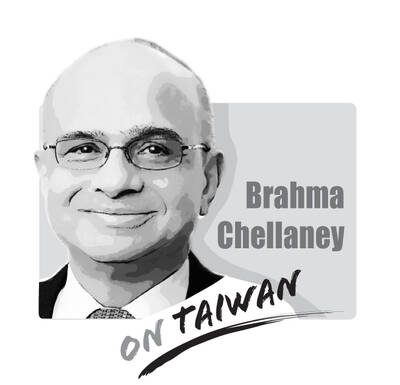Some delivery platforms in Taiwan claim that they have a “contractual” relationship with their couriers so that they do not have to pay for the couriers’ national health insurance. This means that couriers would not receive any compensation if they have an accident in the course of their work. It leaves them with no safeguards as workers.
Many people do delivery work as a full-time job. It is unreasonable for delivery platforms, which profit handsomely from the couriers work, to completely shirk their responsibility when accidents occur.
The Uber Eats platform in the US takes out accident insurance for its couriers. Each courier’s accident insurance activates as soon as the customer places an order.
In Japan, Uber Eats pays for insurance coverage of up to ¥100 million (US$922,100) in compensation for vehicles and accident victims if their couriers have traffic accidents while delivering food.
Uber Eats in Japan has announced that it provides health insurance for its couriers. Now, couriers who are injured in accidents could receive insurance benefits of up to ¥250,000 for medical treatment. If they die, their dependents could receive a death benefit of up to ¥10 million.
Taiwanese laws have not caught up with the emerging gig and platform economies. The government should step up with substantial measures, such as stipulating that platforms must pay for accident insurance for couriers. Taiwanese authorities should not allow food delivery companies to evade the consequences of couriers’ occupational accidents or permit them to reduce their operating costs by passing the financial burden on to the public.
Companies that reap a “bonus dividend” from the sharing economy must bear their social responsibility. It should not be thought of as a business burden, but rather as the paramount value of business ethics.
Dino Wei works in the information industry.
Translated by Julian Clegg

Taiwan stands at the epicenter of a seismic shift that will determine the Indo-Pacific’s future security architecture. Whether deterrence prevails or collapses will reverberate far beyond the Taiwan Strait, fundamentally reshaping global power dynamics. The stakes could not be higher. Today, Taipei confronts an unprecedented convergence of threats from an increasingly muscular China that has intensified its multidimensional pressure campaign. Beijing’s strategy is comprehensive: military intimidation, diplomatic isolation, economic coercion, and sophisticated influence operations designed to fracture Taiwan’s democratic society from within. This challenge is magnified by Taiwan’s internal political divisions, which extend to fundamental questions about the island’s identity and future
Taiwan People’s Party (TPP) Chairman Huang Kuo-chang (黃國昌) is expected to be summoned by the Taipei City Police Department after a rally in Taipei on Saturday last week resulted in injuries to eight police officers. The Ministry of the Interior on Sunday said that police had collected evidence of obstruction of public officials and coercion by an estimated 1,000 “disorderly” demonstrators. The rally — led by Huang to mark one year since a raid by Taipei prosecutors on then-TPP chairman and former Taipei mayor Ko Wen-je (柯文哲) — might have contravened the Assembly and Parade Act (集會遊行法), as the organizers had
The Chinese Nationalist Party (KMT) has postponed its chairperson candidate registration for two weeks, and so far, nine people have announced their intention to run for chairperson, the most on record, with more expected to announce their campaign in the final days. On the evening of Aug. 23, shortly after seven KMT lawmakers survived recall votes, KMT Chairman Eric Chu (朱立倫) announced he would step down and urged Taichung Mayor Lu Shiow-yen (盧秀燕) to step in and lead the party back to power. Lu immediately ruled herself out the following day, leaving the subject in question. In the days that followed, several
The narrative surrounding Indian Prime Minister Narendra Modi’s attendance at last week’s Shanghai Cooperation Organization (SCO) summit — where he held hands with Russian President Vladimir Putin and chatted amiably with Chinese President Xi Jinping (習近平) — was widely framed as a signal of Modi distancing himself from the US and edging closer to regional autocrats. It was depicted as Modi reacting to the levying of high US tariffs, burying the hatchet over border disputes with China, and heralding less engagement with the Quadrilateral Security dialogue (Quad) composed of the US, India, Japan and Australia. With Modi in China for the